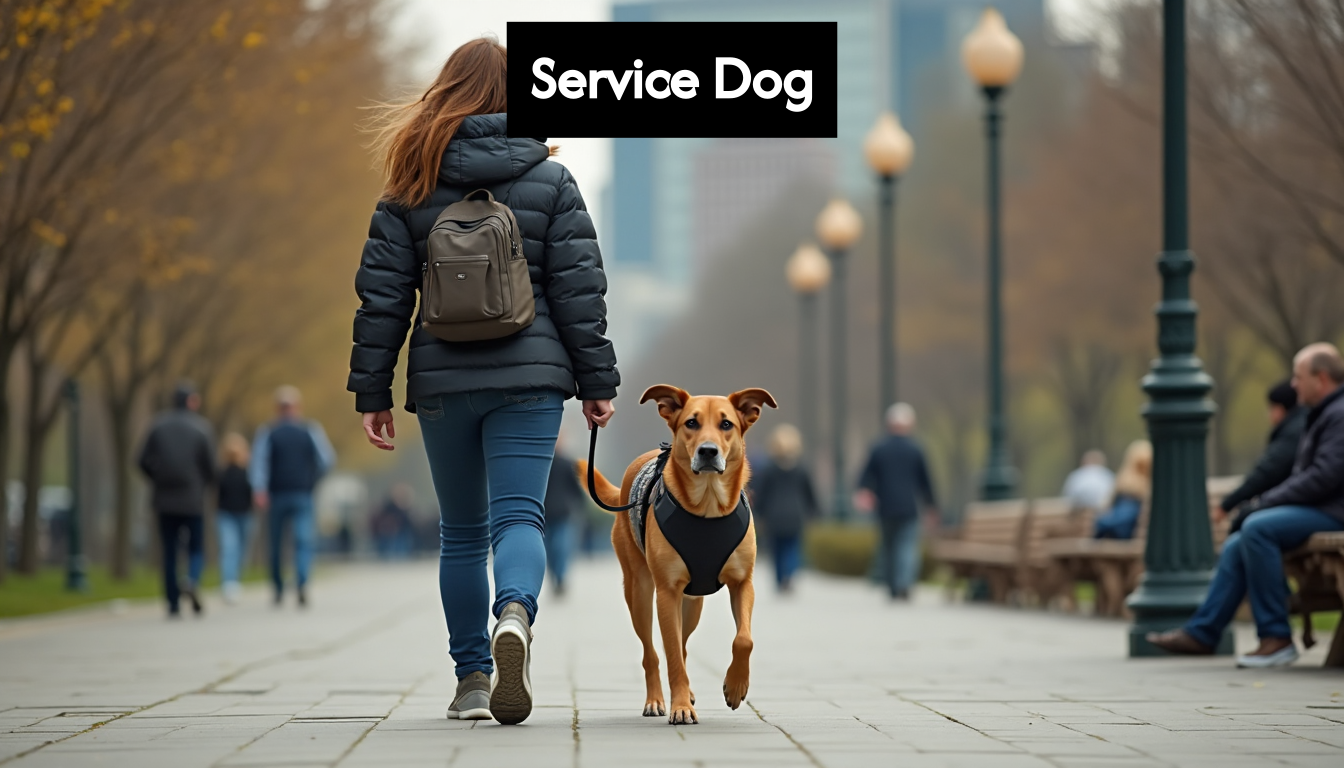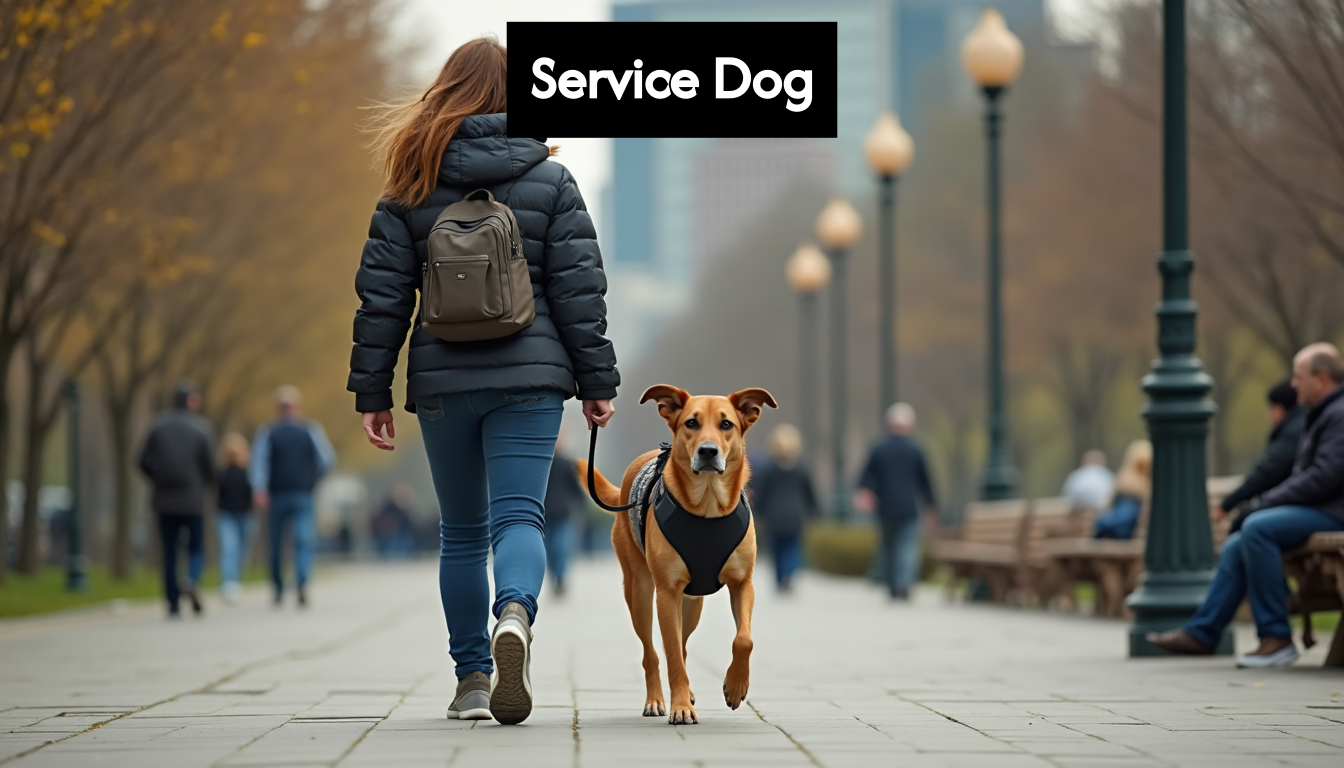
Finding the perfect service dog can change a person’s daily life in ways most people never imagine. Most folks think it all comes down to picking the smartest or the cutest pup. Yet less than one in every 100 dogs tested actually meets strict service dog criteria. Here is where it gets interesting. The secret to a successful partnership often lies in traits you might overlook, like emotional stability and lifestyle compatibility, not just intelligence. The real decision is about a dog that fits your world and needs, not just a breed’s reputation.
Table of Contents
- Key Qualities To Look For In A Service Dog
- Matching Service Dog Breeds To Your Lifestyle
- Evaluating Service Dog Candidates: Step-By-Step
- Working With Trainers And Organizations Effectively
Quick Summary
| Takeaway | Explanation |
|---|---|
| Intelligence and Trainability are Essential | A successful service dog must be highly intelligent and trainable to perform complex tasks and respond effectively in various environments. Breeds like German Shepherds and Labrador Retrievers excel in these areas. |
| Evaluate Emotional Stability and Temperament | Service dogs must maintain emotional composure in stressful situations. Key traits include a calm demeanor, low reactivity, and a gentle disposition, which are crucial for ensuring the handler’s safety and independence. |
| Consider Physical Health and Compatibility | It’s vital to assess a dog’s size, strength, stamina, and overall health to ensure they can perform necessary tasks effectively and support their handler’s specific needs. |
| Conduct a Thorough Evaluation Process | Selecting a service dog involves a multi-step evaluation, including health assessments, public access testing, and verifying specialized skills tailored to the handler’s unique requirements. |
| Ensure Effective Communication with Trainers | Building strong partnerships with trainers involves clear communication, setting measurable goals, and maintaining ongoing support to adapt as both the handler’s and dog’s needs change over time. |
Key Qualities to Look for in a Service Dog
Choosing the right service dog requires careful consideration of specific qualities that determine their effectiveness and reliability. Not every dog can become a successful service animal. The ideal service dog must possess a unique combination of physical attributes, temperament, and trainability that enables them to support their handler’s specific needs.
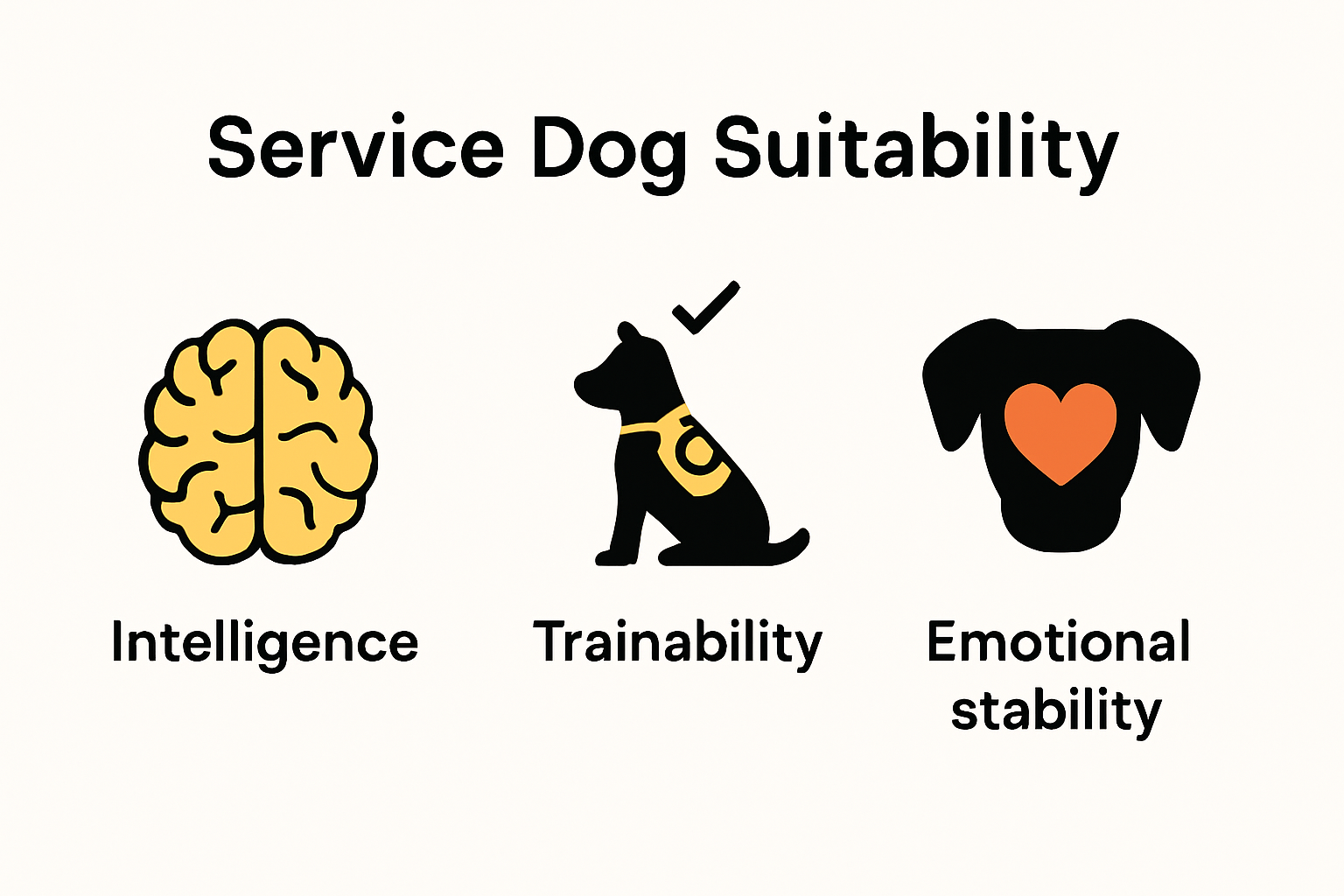
Intelligence and Trainability
Intelligence stands as the foundational quality for any successful service dog. According to research from Service Dog Training Experts, these animals must master complex tasks and consistently recall multiple commands under various environmental conditions. A highly intelligent dog can quickly learn intricate routines and adapt to different scenarios.
Trainability goes hand in hand with intelligence. Service dogs must demonstrate an exceptional ability to focus, follow instructions precisely, and maintain composure during training. Breeds like German Shepherds, Labrador Retrievers, and Golden Retrievers are renowned for their high intelligence and remarkable capacity to learn specialized tasks.
Emotional Stability and Temperament
Emotional composure separates exceptional service dogs from average pets. Canine behavioral research emphasizes that these animals must remain calm and steady in chaotic or stressful environments. A service dog’s ability to maintain emotional equilibrium directly impacts their handler’s safety and independence.
Key temperamental traits include:
- Calm demeanor: Ability to remain composed in crowded or unpredictable settings
- Low reactivity: Minimal response to external stimuli that might distract or agitate an ordinary dog
- Gentle disposition: Consistent gentle behavior, especially crucial when working with individuals with disabilities
Physical Health and Compatibility
Physical characteristics play a critical role in determining a service dog’s effectiveness. The dog must be physically capable of performing specific tasks related to their handler’s needs. This might include mobility support, medical alert functions, or assistance with daily activities.
Considerations for physical compatibility include:
-
Size and strength: Appropriate body size to provide effective support
-
Stamina: Ability to work consistently without fatigue
-
Overall health: Robust immune system and minimal genetic predisposition to health complications
Selecting the right service dog is not just about finding a well-trained animal. It’s about discovering a dedicated companion who can seamlessly integrate into their handler’s life, providing not just assistance but also emotional support and independence. Our comprehensive service dog training guide offers deeper insights into preparing these remarkable animals for their critical roles.
Remember, every service dog is unique. The journey of finding your perfect service dog partner requires patience, understanding, and a comprehensive evaluation of both the dog’s qualities and your specific needs.
Matching Service Dog Breeds to Your Lifestyle
Selecting the right service dog breed involves more than just picking a cute companion. Your lifestyle, specific needs, and daily environment play crucial roles in determining the most suitable service dog. Understanding how different breeds align with various handler requirements ensures a successful and harmonious partnership.
Energy Levels and Activity Compatibility
Service dog breeds vary significantly in their energy requirements and activity levels. According to canine behavioral research, matching a dog’s energy to your lifestyle is fundamental. For individuals with limited mobility, lower energy breeds like Bulldogs or Basset Hounds might be ideal. Conversely, active handlers might find excellent partners in high-energy breeds such as German Shepherds or Labrador Retrievers.
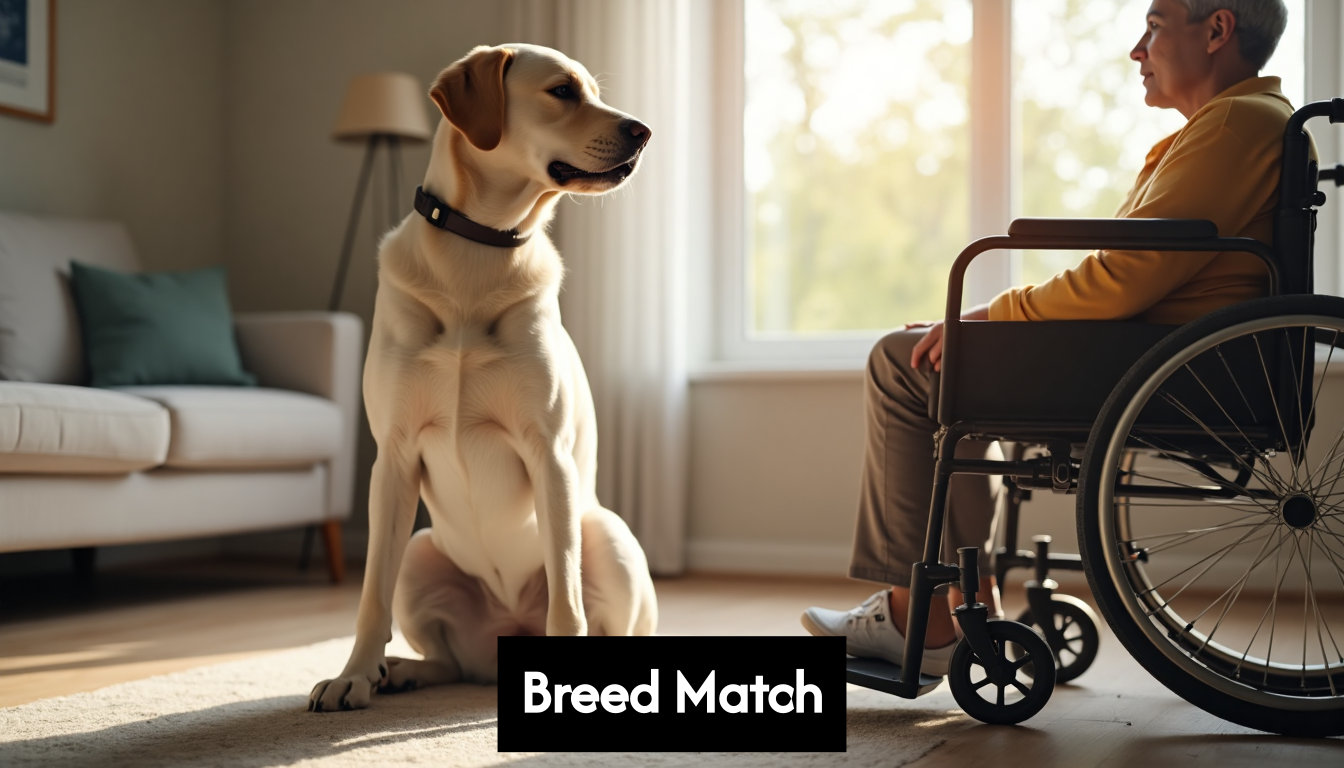
Research from working dog specialists indicates that Labrador Retrievers remain among the most versatile service dog breeds. Their adaptable nature allows them to excel in various roles, from mobility assistance to medical alert tasks. Their friendly temperament and consistent trainability make them particularly attractive for handlers seeking a reliable companion.
Specialized Tasks and Breed Characteristics
Different service dog breeds excel in specific task domains. Boxers, for instance, demonstrate exceptional skills in psychiatric support, making them excellent companions for handlers managing mental health conditions. Golden Retrievers are renowned for their gentle disposition and remarkable ability to perform complex mobility and therapy tasks.
Consider these breed-specific strengths:
- German Shepherds: Superior intelligence, excellent for complex medical alert and mobility support
- Poodles: Hypoallergenic coat, high trainability, suitable for handlers with allergies
- Border Collies: Exceptional problem solving skills, ideal for handlers requiring precise task performance
Physical Environment and Living Conditions
Your living environment significantly influences breed selection. Urban apartment dwellers might prefer smaller, adaptable breeds like Poodles or Corgis, which require less space and can navigate tight environments efficiently. Handlers with large outdoor spaces or rural settings might opt for larger breeds with higher exercise needs.
Key environmental considerations include:
- Space availability: Matching dog size to living quarters
- Climate adaptability: Selecting breeds comfortable in your local temperature range
- Noise tolerance: Choosing breeds that remain calm in various sensory environments
Our comprehensive service dog training guide provides additional insights into preparing your chosen breed for specialized service work. Remember that individual dog temperament can vary within breeds, so personal interaction and professional assessment remain critical in making your final selection.
Evaluating Service Dog Candidates: Step-by-Step
Selecting the right service dog is a meticulous process that requires careful evaluation and systematic assessment. The journey from potential candidate to fully trained service dog involves multiple critical stages of screening and verification. Understanding these steps ensures you find a reliable, capable companion who can effectively support your specific needs.
Initial Health and Temperament Assessment
Assistance Dogs International recommends a comprehensive initial evaluation focusing on the dog’s fundamental health and temperamental characteristics. This crucial first step involves a thorough medical examination and behavioral screening to identify potential limitations or strengths.
Key initial assessment criteria include:
- Physical health: Comprehensive veterinary examination
- Genetic screening: Checking for potential hereditary health issues
- Temperament evaluation: Assessing emotional stability and stress response
Professional trainers look for specific behavioral markers such as:
- Calm demeanor under unexpected stimuli
- Quick recovery from startling events
- Consistent willingness to work cooperatively
- Ability to maintain focus in distracting environments
Public Access and Task Performance Evaluation
Service dog training experts emphasize the critical nature of public access testing. This stage determines whether a dog can perform tasks effectively while maintaining composure in diverse public settings. The evaluation goes beyond basic obedience, requiring the dog to demonstrate exceptional control and task-specific skills.
Evaluation components typically include:
- Distraction resistance: Maintaining focus despite environmental challenges
- Command responsiveness: Immediate and precise execution of handler instructions
- Behavior in crowded spaces: Remaining calm and controlled in complex environments
- Task-specific skill demonstration: Performing disability-related assistance tasks consistently
Specialized Skills and Individual Training Verification
The final stage of evaluation centers on the dog’s ability to perform individualized tasks directly related to the handler’s specific disability requirements. International assistance dog standards mandate that service dogs must be individually trained to address unique handler needs.
Specialized skill verification involves:
- Documenting specific task performance capabilities
- Assessing the dog’s learning adaptability
- Confirming consistent task execution under varying conditions
- Evaluating the dog’s physical and mental capacity to support handler requirements
Our comprehensive service dog training guide provides additional insights into preparing and verifying a service dog’s capabilities. Remember that each dog is unique, and the evaluation process requires patience, professional guidance, and a thorough understanding of both the dog’s potential and the handler’s specific needs.
Successful service dog selection is not about finding a perfect animal, but discovering a dedicated partner who can grow, learn, and adapt to support you effectively throughout your journey.
Working With Trainers and Organizations Effectively
Establishing successful partnerships with professional service dog trainers and organizations requires strategic communication, clear expectations, and a comprehensive understanding of the collaborative process. These relationships are fundamental to developing a reliable, well-trained service dog that can effectively support an individual’s specific needs.
Identifying Credible Training Organizations
Assistance Dogs International provides critical guidance for selecting reputable training organizations. Their accreditation serves as a gold standard, ensuring that trainers meet rigorous global standards for service dog preparation. When evaluating potential organizations, handlers should focus on several key indicators of credibility.
Critical evaluation criteria include:
- Professional certifications: Verifying trainer credentials and specialized training
- Organizational track record: Reviewing success rates and client testimonials
- Specialized expertise: Confirming experience with specific disability requirements
- Ongoing support: Assessing post-training guidance and resources
Effective Communication and Goal Setting
Successful collaboration hinges on transparent, detailed communication between handlers, trainers, and organizations. Canine behavior experts emphasize the importance of establishing clear, measurable goals that align with the handler’s unique needs and the dog’s potential capabilities.
Key communication strategies involve:
- Comprehensive initial assessment: Detailed discussion of specific requirements
- Regular progress updates: Structured feedback mechanisms
- Collaborative goal modification: Flexibility in adapting training approaches
- Transparent expectation management: Realistic understanding of training timelines and potential challenges
Continuous Learning and Support
Service dog partnerships represent an ongoing journey of learning and adaptation. Professional training organizations recognize that effective support extends far beyond initial training. The most successful partnerships involve continuous education, periodic skill assessments, and adaptive strategies that evolve with the handler’s changing needs.
Essential ongoing support elements include:
- Periodic skill reassessment: Regular evaluations of dog’s performance
- Handler training workshops: Continuous education for effective team communication
- Adaptive training techniques: Modifying approaches based on emerging handler requirements
- Mental health support: Resources for both handler and service dog
Our comprehensive service dog training guide offers additional insights into navigating these complex partnerships. Remember that successful service dog relationships are built on mutual respect, patience, and a commitment to continuous growth.
Ultimately, the most effective partnerships emerge from a foundation of trust, open communication, and a shared dedication to supporting the handler’s independence and quality of life.
Frequently Asked Questions
What qualities should I look for in a service dog?
A successful service dog should possess intelligence, emotional stability, and physical health. Key traits include a calm demeanor, high trainability, and compatibility with your lifestyle and needs.
How do I evaluate potential service dog candidates?
Evaluate service dog candidates through a multi-step assessment process, including initial health checks, temperament evaluations, public access testing, and verification of specialized skills tailored to your specific requirements.
What are the best service dog breeds for different lifestyles?
Labrador Retrievers, German Shepherds, and Golden Retrievers are versatile and popular service dog breeds. Match the dog’s energy level and temperamental traits to your lifestyle to ensure a successful partnership.
How can I effectively work with a service dog trainer?
Effective collaboration with a trainer involves clear communication, setting measurable goals, and seeking ongoing support. Choose accredited organizations and engage in regular progress updates to adapt the training to your evolving needs.
Empower Every Service Dog Partnership with Advanced Communication
Finding the perfect service dog is only the first step toward true independence and security. As the article highlighted, your top priorities include communication, safety, and creating a seamless bond that truly supports your lifestyle. But even the best-trained service dogs can face challenges expressing urgent needs or alerting you to danger—especially for handlers with limited mobility or special requirements.
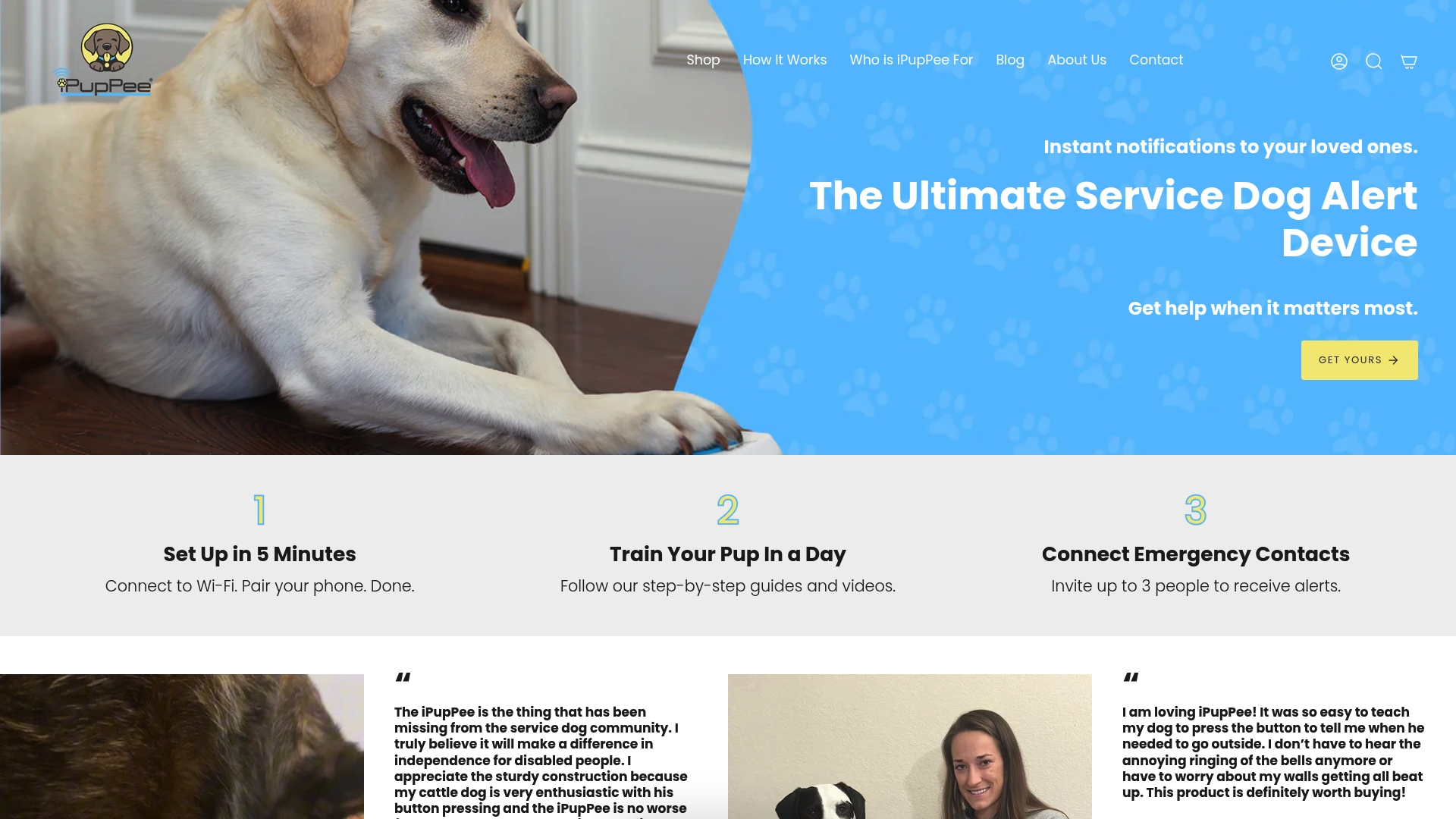
Discover how the iPupPee device at ipuppee.com transforms daily life for service dog owners like you. With a simple button press, your dog can signal when it is time for assistance, enhancing both your safety and your dog’s ability to serve. Check out real stories and training tips in our customer testimonials and education section to see how others have strengthened their service dog partnerships. Visit ipuppee.com today and give your service team the communication advantage for a more confident, independent future. Now is the best time to unlock safer, smarter living—start your journey now.
Recommended Articles
-
https://ipuppee.com/blogs/news/do-dogs-know-its-christmas-making-the-holidays-merry-for-your-pup)
-
https://ipuppee.com/blogs/news/beat-the-heat-top-tips-for-keeping-your-dog-cool-this-summer)
-
https://ipuppee.com/blogs/news/love-affection-vs-correction-finding-the-balance-in-dog-training)
-
https://ipuppee.com/blogs/news/🐾-microchip-magic-why-chipping-your-pet-could-save-their-life)

